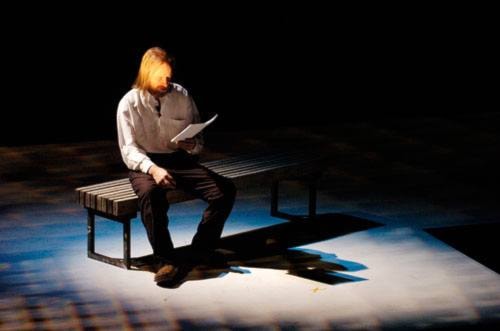Ilgvars Steins is proof that creativity doesn’t die off with age. The older Steins gets, it seems the bolder his work becomes.
Last week, the 84-year-old painter celebrated the opening of his latest exhibit at the Confluence Art Gallery at Dawson’s School of Visual Arts.
The work is a culmination of 60 years of painting and sketching by the Latvian-born artist.
In Steins’ work, reality is twisted with fantasy to create unusual pairings. In one painting, an ogre-like monster sits down to eat a bowl of porridge. In another, an unseemly large fork pierces a dark, cottony cloud.
Much of his newer work, painted in vibrant purples, yellows and reds has a Salvador Dali quality to it.
But Steins doesn’t consider his work distinct or particularly innovative.
“Today it’s difficult for any artist to find an original approach,” said Steins while sipping wine in his crammed studio space.
“All the artists I’ve met want to be original and unique, but its actually quite hard.”
When Steins was an art student, he picked up the advice Paul Gauguin once gave to young artists to help them define their style..
“He said, ‘My dear friends, do you want to be original and unique, then go to your studio and select three or four of your best works that you truly like. When you have them, make copies of those works and accentuate the parts you like.”
Gauguin told artists to make copies of copies.
“In a month’s time you’ll look at the final result and you’ll discover the new pieces aren’t that bad. In fact, they’re unlike anything you’ve done before,” said Steins, who swears by the advice.
He likens the exercise to “esthetic masturbation,” a solitary process of self-improvement.
The whole process of making art is irrational, said Steins. The results an artist will get when he’s painting or drawing are totally unexpected.
“If there’s things you’re pleased with you embellish it and if there’s things you find disturbing you subdue them.”
Steins started making art at the age of four when he learned to draw from his mother and nanny in Latvia, where he grew up.
When he was 18 years old, he was sent to fight in the Latvian army. At the time he was attending a private art school in the capital city of Riga.
“Against my better judgement I had to participate in the killing fields of Europe,” he said.
“A number of people my age lost their lives for no reason.”
On his work desk, Steins keeps a picture of a childhood friend who died during the Second World War.
The small black-and-white photo is tucked into the corner of a framed picture of his father. Placed on the edge of his desk, its surrounded by overflowing cups of pens and paintbrushes, cigarette packages and candles.
When the war ended, Steins considered going back to his home country, but stayed away because of political reasons.
“Soviet forces had taken over my country and established a very harsh regime - my life was at risk,” he said.
Steins went to West Germany instead and a couple years later, intrigued by some art shows in Canada, picked up and emigrated to Toronto.
There he attended the Ontario College of Art.
A self-portrait of Steins from that time reveals a young man, clad in thick horn-rimmed glasses and a red, collared shirt, brimming with self-importance.
The pastel-and-chalk portrait is hung beside a more recent photo of Steins snapped by his son John. In the picture the elder Steins is looking out the back of a red truck and shadowing his face from the camera
“These days I’m working on being more humble,” he said.
A self-reflective man, Ilgvars Steins sees no point in lying about who he is.
After breaking up with his wife several years ago, he decided marriage wasn’t for him.
“I’m not qualified - even if I were 20 years younger,” he said with a smile. “I’m not that type of person, I’m too self-absorbed.”
After graduating from art school in the ‘50s Ilgvars was hired by the Royal Ontario Museum to design displays and mount shows. He was also commissioned to make pen-and-ink illustrations of plants for botany textbooks.
He has only infrequently exhibited his work in Canada, parts of the United States and his home town of Riga. In 2002, his son urged him to publish a book of some of his work.
The book hides under stacks of other art books, magazines and papers in his tiny workspace on the first floor of his son’s home in Dawson.
Ilgvars moved there from Toronto two years ago and has lived a hermit-like existence since then.
“I frankly don’t know Dawson at all,” he said, jokingly calling it a “gulag.”
“I sit out on the balcony of the house and get fresh air then go back inside.”
He’s still actively painting and working on projects, but these days he’s more distracted by paperwork than art.
In the last few months he’s focused on writing letters and corresponding with people “in the Outside world.” He’s also been catching up with a backlog of taxes.
“I’m quite happy because I have so much to do here,” he said.
“If I get my taxes complete though I’ll be the happiest person in the world.”
Steins’ work will be on display at the Confluence Gallery until June 27.
Contact Vivian Belik at
vivianb@yukon-news.com
